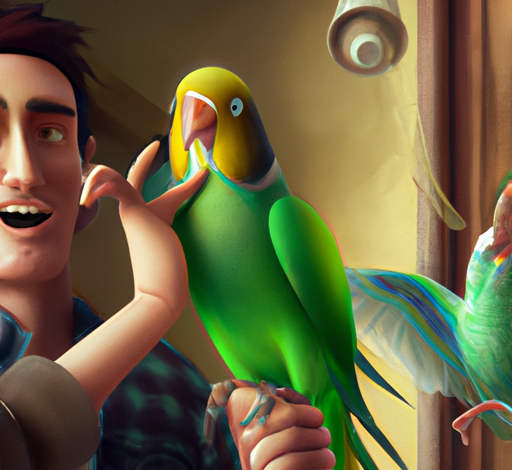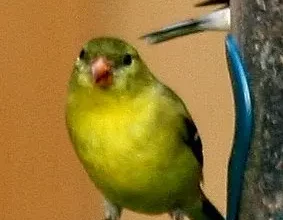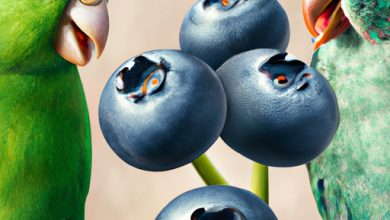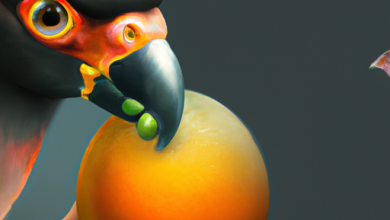How to Stop a Screaming Parakeet

Identifying the Causes of Parakeet Screaming
Parakeets, also known as budgerigars or budgies, are small, colorful birds that are popular pets. They are known for their friendly personalities and their ability to mimic human speech. Unfortunately, parakeets can also be prone to screaming. This behavior can be a source of distress for both the bird and its owner. Identifying the causes of parakeet screaming is important in order to address the problem and reduce the bird’s stress.
One common cause of parakeet screaming is territorial behavior. Parakeets are naturally territorial and may scream when they feel threatened by another bird or person. This is especially true if the parakeet is kept in a cage with other birds or if it is exposed to other birds outside its cage. In this case, it is important to provide the bird with plenty of space and privacy to reduce its stress levels.
Another cause of parakeet screaming is boredom or lack of stimulation. Parakeets need plenty of mental stimulation to stay healthy and happy. If a parakeet does not have enough toys and activities to occupy its time, it may become bored and start screaming. Providing your parakeet with plenty of toys and activities can help prevent this behavior.
Parakeets may also scream if they are feeling stressed or anxious. This can be caused by loud noises, changes in routine, or even changes in their environment. It is important to keep your parakeet’s environment as
Creating a Calm Environment for Your Parakeet
Creating a calm environment for your parakeet is essential for its overall health and wellbeing. Parakeets are social creatures and need plenty of stimulation to stay happy and healthy. To ensure that your parakeet has the best possible environment, there are several steps you can take.
First, make sure that the cage is large enough for your parakeet to move around and flap its wings. A smaller cage can cause stress and anxiety in your bird. The cage should also be placed in a quiet area of the home that is away from direct sunlight, drafts, and other animals. You should also provide plenty of toys and perches for your parakeet to explore.
Second, make sure that the temperature in the room is comfortable for your parakeet. Parakeets are sensitive to extreme temperatures, so it is important to keep the room at a comfortable temperature. You should also avoid loud noises or sudden movements in the room as these can startle your bird.
Third, ensure that you provide a healthy diet for your parakeet. Parakeets need a variety of foods to stay healthy, including seeds, fruits, vegetables, and nuts. You should also provide fresh water every day to keep your parakeet hydrated.
Finally, spend time with your parakeet each day. Parakeets are social creatures and need interaction with their owners to stay happy and healthy. Make sure to talk to your parakeet and offer
Establishing a Regular Routine for Your Parakeet
Establishing a regular routine for your parakeet is an important part of providing them with a healthy and happy life. Parakeets are active, social birds that need plenty of stimulation and interaction to stay healthy and content. Having a consistent daily routine can help keep your parakeet active and engaged, as well as provide them with a sense of security.
The first step in creating a routine for your parakeet is to make sure they get plenty of sleep. Parakeets are most active during the day, so it’s important to provide them with a dark, quiet place to sleep at night. This can be accomplished by covering their cage with a light-blocking cloth or towel at night. Make sure to provide them with a comfortable sleeping area, such as a soft bedding material or perch.
In addition to providing your parakeet with plenty of sleep, it’s important to give them opportunities for physical activity throughout the day. Parakeets need time outside of their cage to explore and exercise. This can be accomplished by providing them with a play stand or bird gym, as well as toys and other items to explore and interact with. It’s also important to spend time with your parakeet each day, either playing or simply talking to them.
Finally, it’s important to provide your parakeet with a regular feeding schedule. Parakeets need access to fresh food and water throughout
Providing Appropriate Toys and Stimulation for Your Parakeet
Providing appropriate toys and stimulation for your parakeet is an important part of keeping your pet healthy and happy. Parakeets are highly social animals, so it is important to provide them with plenty of toys and activities to keep them entertained and stimulated.
There are a variety of toys available for parakeets, including swings, ladders, mirrors, bells, and other items that hang from the cage. These toys should be made of safe materials such as wood, plastic, or metal. Avoid toys made of glass, as they can be dangerous for your parakeet. It is also important to make sure that the toys are not too small, as they can pose a choking hazard.
In addition to providing toys, it is important to give your parakeet plenty of opportunities for social interaction. This can be done by talking to your parakeet, playing with them, and providing them with perches to rest on. Parakeets also enjoy playing with other birds, so if you have more than one parakeet, you should make sure they are able to interact with each other.
Parakeets also need plenty of mental stimulation. You can provide this by giving them puzzles to solve or by teaching them tricks. Parakeets are intelligent creatures and can learn a variety of behaviors if given the opportunity.
Finally, it is important to provide your parakeet with a variety of activities throughout the day. This can include providing them
Training Your Parakeet to Respond to Positive Reinforcement Techniques
Training your parakeet to respond to positive reinforcement techniques is an important step in creating a happy, healthy relationship with your pet. Positive reinforcement is a type of training that focuses on rewarding desirable behaviors and ignoring undesired behaviors. It is based on the idea that animals, including parakeets, learn best when they are rewarded for doing something correctly.
The first step in training your parakeet to respond to positive reinforcement techniques is to identify the behaviors you want to encourage. Common behaviors that can be reinforced include stepping up onto a finger or hand, flying to a perch, and talking. Once you have identified the behaviors you want to reinforce, it is important to set up a reward system. This can be done by providing treats, such as millet or other small seeds, or by giving verbal praise or physical affection.
When training your parakeet, it is important to be consistent and patient. You should give rewards immediately after the desired behavior has been performed, and avoid punishing the bird for undesired behaviors. Punishment can be counterproductive and can cause the bird to become fearful or aggressive. Instead, focus on rewarding the desired behavior and ignore any undesired behavior.
It is also important to keep training sessions short and fun. Parakeets can become bored easily, so it is important to keep the sessions interesting and engaging. You can do this by varying the rewards you give, using different toys or activities during the training session, and keeping the
Excerpt
Parakeets are known for their loud vocalizations, but excessive screaming can be a sign of distress. To reduce the screaming, provide your parakeet with plenty of toys and activities to keep them entertained, as well as a comfortable, quiet environment. Additionally, make sure they are getting enough sleep and have access to healthy food and fresh water.




